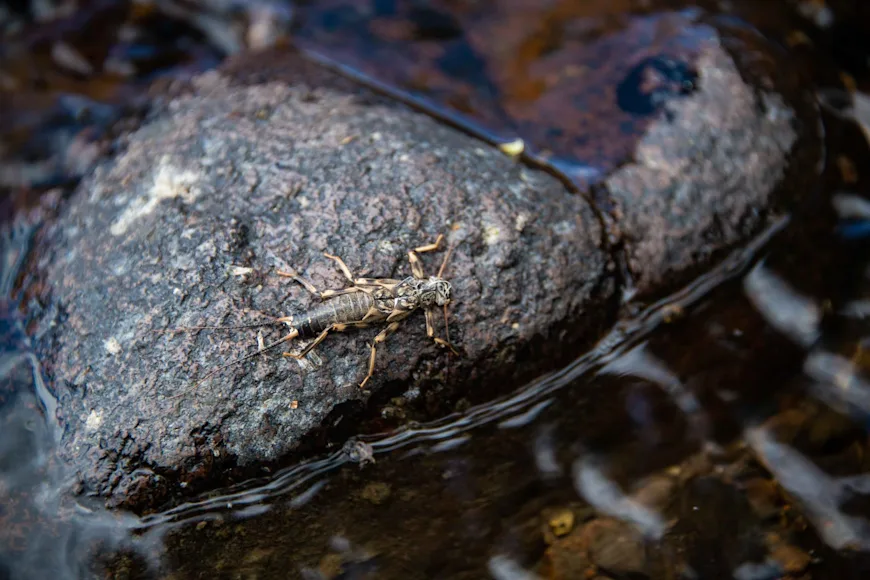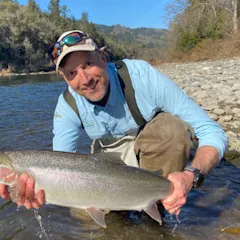If you spend much time around fly anglers who pursue trout, you’ll soon be subjected to detailed entomology lessons. Many trout fly anglers love studying aquatic insects because imitating those bugs is how they catch fish. And while the world of aquatic insects is vast and can be extremely complex, the basics are just that. Basic.
Four primary types of aquatic insects form the foundation of a trout’s diet: mayflies, stoneflies, caddisflies, and midges. Learning how to identify each category of bugs will help you better match the insects and flies you encounter on the river. You don't have to become an entomologist to start catching more fish, but a good understanding of all the types of aquatic insects and how to imitate them with flies will increase the number of fish you land. Here's a quick guide to the four main types of insects found in most trout fisheries.
Mayflies (Ephemeroptera)

If there is a single aquatic insect that is most associated with fly angling, it is the mayfly. The image of a mayfly, with its long tail, slender body, and regal vertical wings, is practically shorthand for trout fly fishing.
There are more than 3,000 species of mayflies, varying greatly in size, color, and behavior. Fly anglers should have a basic understanding of the four stages of a mayfly’s life cycle. It starts with eggs laid on the water’s surface. Those eggs sink and eventually hatch into nymphs. Like all insects, mayfly nymphs have six legs. They have two or three tails and, generally, flat bodies. Mayfly nymphs are further categorized into clingers, crawlers, swimmers, and burrowers.
Clingers (March Browns, Light Cahills, Quill Gordons) tend to be found in the fastest water. Crawlers also like riffles, but maybe not the fastest flows. Some crawlers include bright yellow Sulphurs, Pale Morning and Pale Evening duns, and tiny Tricos.
Swimmers prefer slower water, especially with vegetation. Blue-winged Olives, a small mayfly known for hatching in chilly, cloudy weather, are an important swimmer hatch for fly anglers.
Burrowers tend to be found in the slowest water because that’s where they find the soft bottom they need for burrowing. The best-known burrowers are among the largest mayflies anglers will see, including Green and Brown Drakes and the legendary and huge “Hex” mayflies of late spring and early summer.
Sometimes nymphs become trout food when they get dislodged, which is why you can catch fish on nymphs even when there’s not an active hatch. But the best nymph fishing is during a hatch when those specific nymphs end up in the water column as they make their way to the surface.
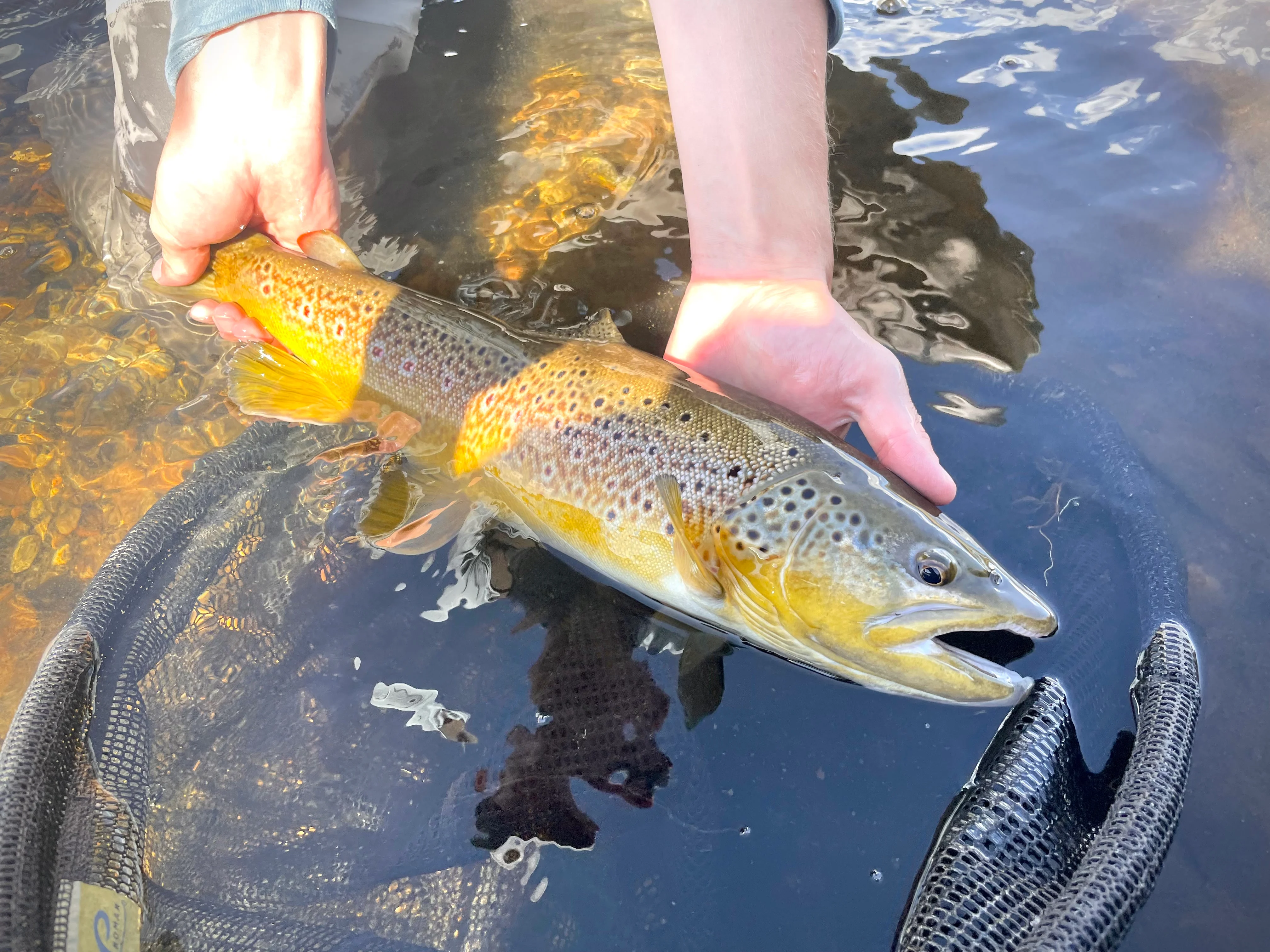
The most important factors for matching nymphs are location, nymph size and behavior. Riffles, runs, or pools? Small, medium or large flies? Dead-drifting in the current or swimming? If fished in the correct size and general color and with the correct presentation, classic impressionistic flies like a Gold-ribbed Hare’s Ear nymph or a Pheasant Tail nymph can be all an angler needs for success.
When it’s time to hatch, mayfly nymphs make their way to the water’s surface, shuck their shells, and turn into winged insects—the dun phase. When those duns are on the water’s surface drying their wings before alighting, they are very vulnerable to feeding fish. During this phase of a hatch you’ll see rises so you’ll know where to cast. You’ll also see mayflies rising into the sky, so you’ll know the basic color and size of the fly to fish.
Again, the keys to success are size, general color, and presentation. So, while it might be fun to fish an exact match, it’s usually just fine to fish a classic and simple pattern, such as a Comparadun, sparkle dun, or even a basic Adams.
After escaping hungry fish, mayfly duns fly to streamside vegetation to once again molt, this time transforming into sexually mature adults, or spinners as they are known in fly fishing parlance.
When ready to mate, adult mayflies swarm above the water, and males and females connect. Upon mating, females land on the water to quickly deposit their eggs, and spent males also fall to the surface—this is known as a spinner fall.
These spent spinners are most vulnerable now, and the spinner fall is often the best time for dry fly action during a hatch. Flies imitating spinners have flat wings, and again, matching the natural flies' size and general color is the key to success.
One of my best dry fly fishing evenings came a few years ago while fishing a simple spinner pattern during a sulfur spinner fall on the Angler’s Paradise section of Pennsylvania’s famous Spring Creek. That fly was ugly as sin after it had been gnawed on by a couple dozen browns, but it still worked because it was the size and shape of the naturals.
Stoneflies (Plecoptera)
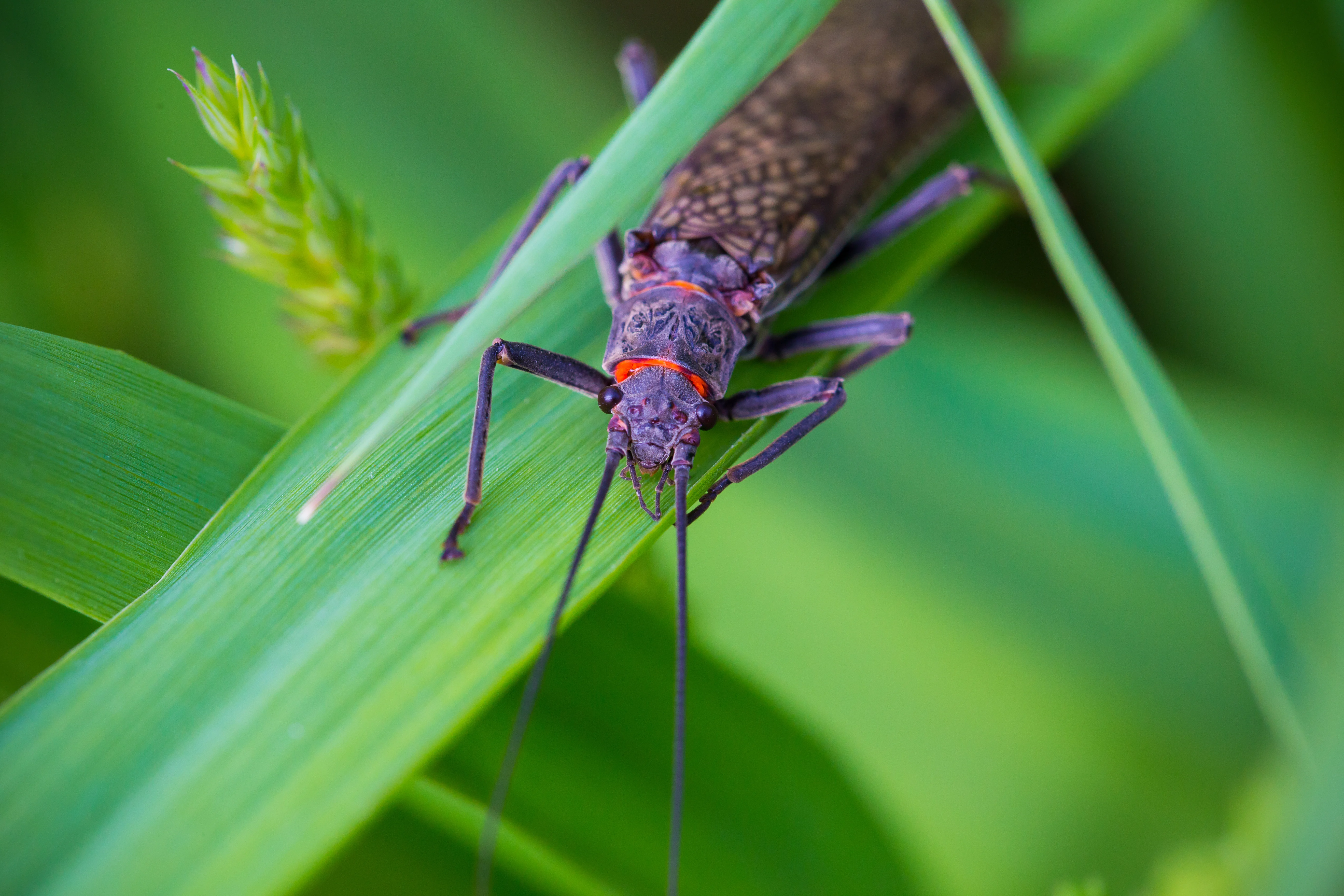
There are about 3,500 species of stoneflies worldwide, including several of importance to fly anglers in North America. Stoneflies have a simple, three-stage life cycle: egg to nymph to adult. Nymphs have six prominent legs and two tails. They are generally flat-shaped, but more rotund than most mayfly nymphs. They thrive in clean, well-oxygenated water.
While some stonefly nymphs rise through the water column like mayflies, most crawl ashore, setting on streamside vegetation or rocks before shedding their exoskeleton and turning into winged adults. These adult flies are easily identified by their flat wing shape.
During a hatch, stonefly nymphs can get dislodged from the stream button during their journey to shore. Stoneflies also deliberately leave the bottom to drift to new territory as they grow, with this “drift” behavior typically taking place from early fall to spring.
Whether fishing during a hatch or off-season, searching with a general stonefly nymph pattern—such as a beadhead stonefly nymph or even more expressionist flies, such as the Girdle Bug or Pat’s Rubberlegs—can be effective even when it’s not obvious that a hatch is underway.
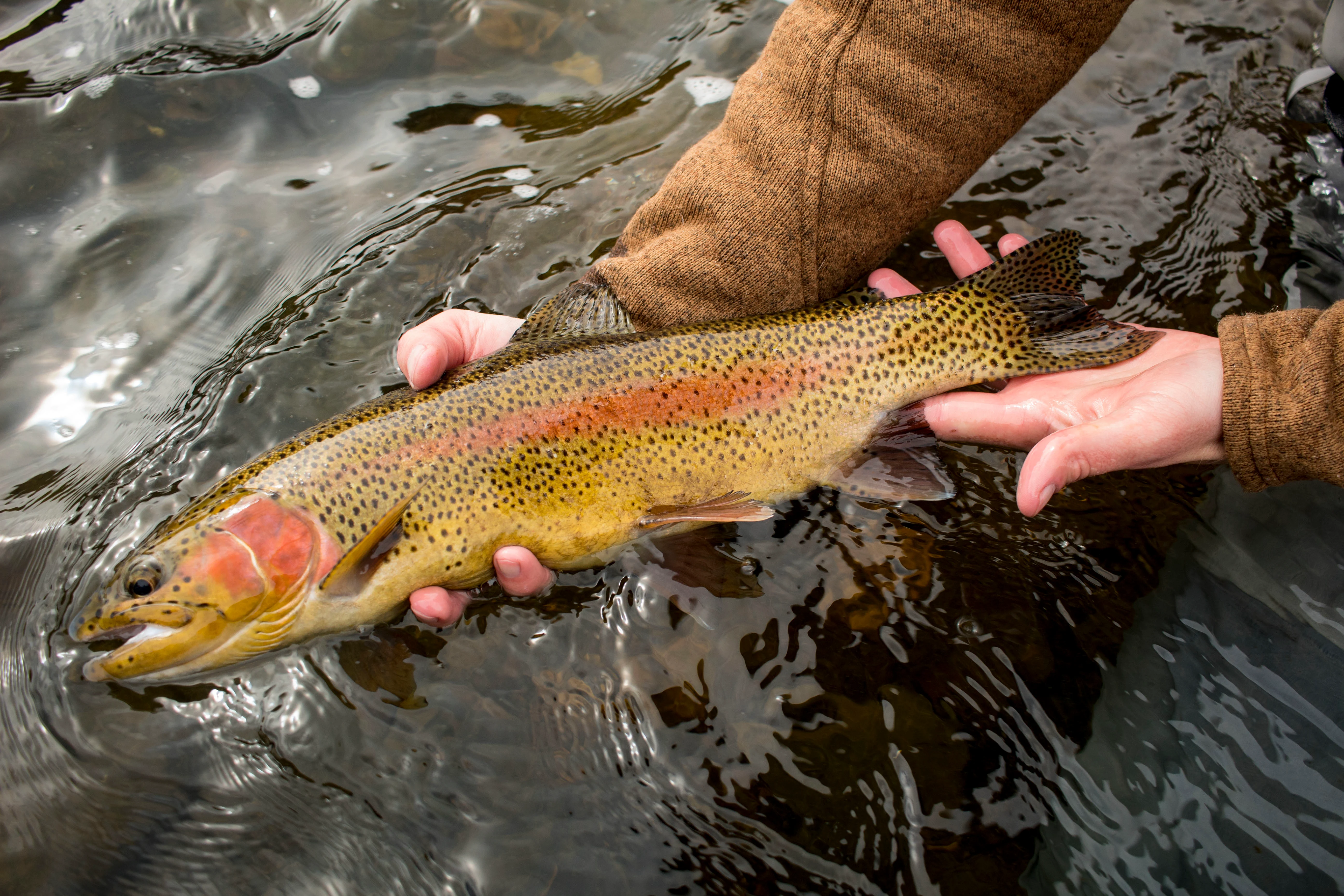
Some stonefly species hatch in the winter and early spring, providing fly anglers with opportunities to fish dry flies at a time when nymphs and streamers are typically the game. Yellow Sallies—medium-sized bright yellow stoneflies—are common in late summer and early spring on many freestone streams.
Adult stoneflies return to the air above streams to mate and to the water to lay eggs. While smaller stonefly species can provide for good dry fly action, it’s the hatches of giant stoneflies—called Salmonflies in the West—that are really exciting. These critters can be 2 inches long and can cause even normally finicky trout to lose their minds.
Because the big bugs are clumsy and move even on the water, fly anglers can get away with sloppy drifts. In fact, sometimes it’s best to give the fly some movement. One of my most memorable salmonfly fish was a stout brown trout that blasted out of the streamside shadows to chase down and annihilate a fast-skittering size 2 Sofa Pillow fly on the middle section of Oregon’s Deschutes River.
There are many patterns designed to imitate adult stoneflies, but the iconic Stimulator is hard to beat as it can be tied in innumerable sizes and colors.
Caddis (Trichoptera)
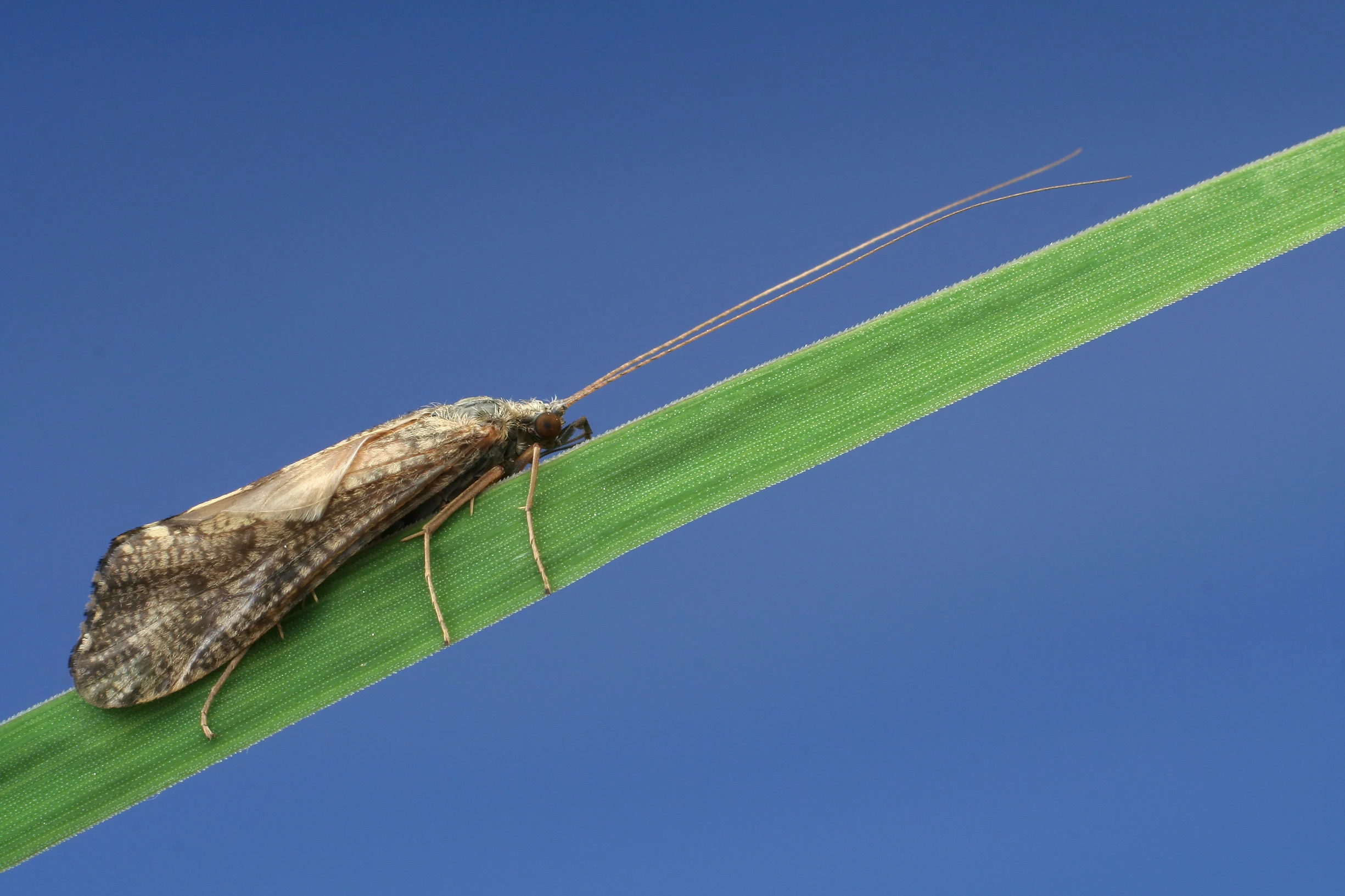
Caddisflies are aquatic insects that are related to moths. Adults have four wings that lay back along the side of the insect’s body. They are sensitive to poor water quality, which is why they are so common in cold, clean trout streams.
Caddis have a four-stage life cycle: eggs to larva to pupa to adult. Many caddis larvae produce protective cases of twigs and tiny stones. Eventually, the larva seals the case, entering the pupal stage, which can last several weeks. When the pupa has transformed into an adult and is ready to hatch, it chews its way through the case and swims to the water’s surface.
For fly anglers, the key word there is “swim.” Because the bugs are actively moving, a drag-free drift is often not necessary to trick fish feeding on emerging caddis. Look for splashy rises as trout target those fast-moving bugs. Egg-laying adult caddis are also known to “dance” on the water’s surface while depositing eggs, which is why skittering a caddis dry fly imitation can be so effective.
A great way to fish a caddis hatch is to fish an emerger pattern on a short dropper tied to the hook bend of a caddis dry fly. As for dries, once again, there’s rarely a need to overthink patterns. The iconic Elk Hair Caddis is an impressionistic fly that can be tied in a variety of sizes and colors. Stimulators can also be effective.
An effective emerger can be as simple as a little bright green chenille wrapped on a hook with a peacock herl thorax. Always let your caddis dry-emerger rig swing at the end of a cast and expect hits as that emerger rises to the surface.
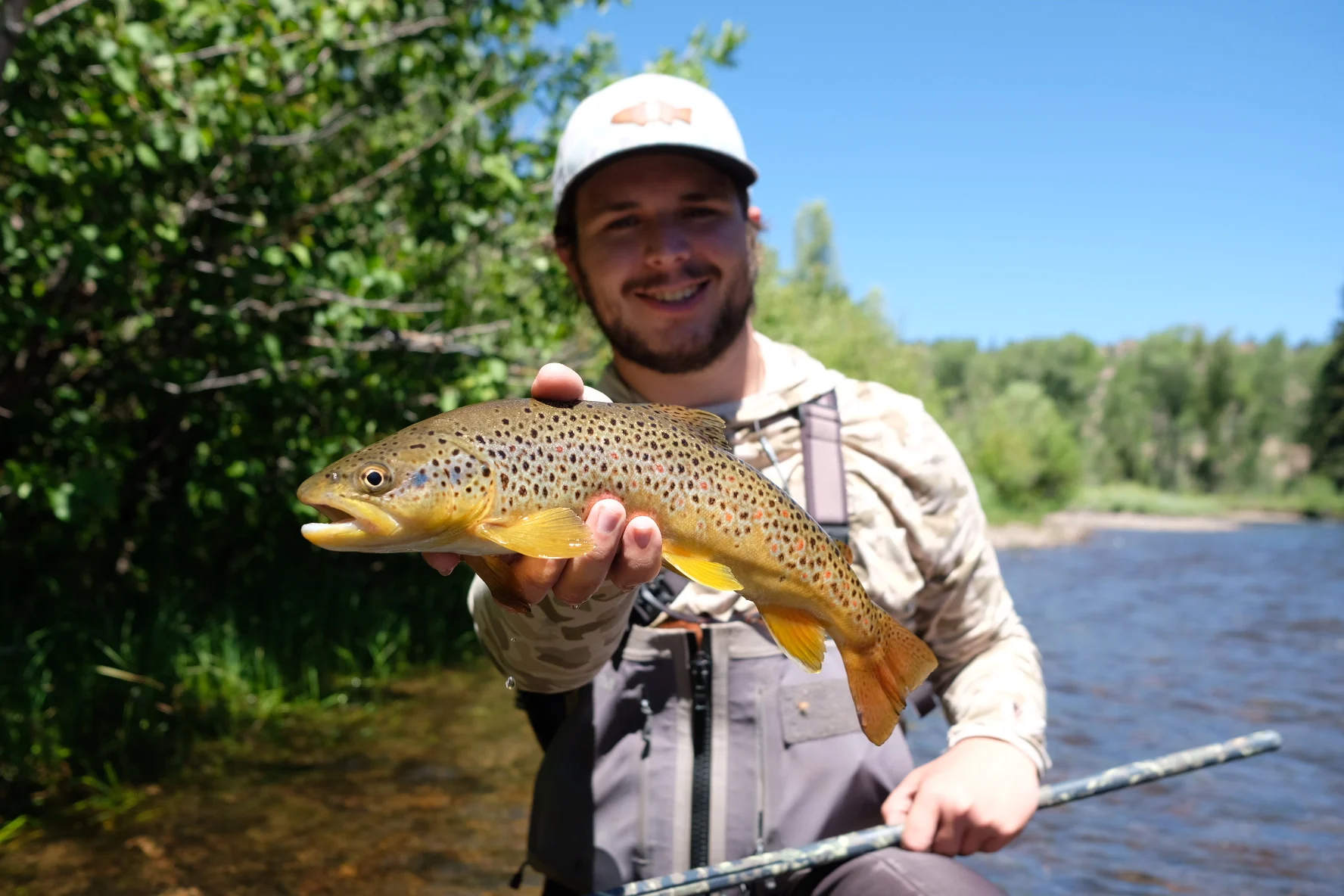
Midges (Chrionomidae)
A final important aquatic insect for trout anglers is the midge. What they lack in size, they make up for in volume, which is why they are an important food source for trout in many waters. The four stages of a midge’s life cycle are egg, larva, pupa, and adult. The larvae are long (relatively speaking) and thin, while the adults are spindly and look much like mosquitoes. Unlike mosquitoes, midges don’t bite!
Midge larvae live in the benthic region of a water body, feeding (in many different ways, depending on the species) before entering a short pupal stage. When ready to hatch, the pupa swim to the water’s surface, shed their pupal shell, and take to the air.
Flies that imitate midge pupa, such as the famous Zebra Midge pattern, can be exceedingly simple. One of my favorite flies is simply colored thread wrapped around the hook shank, often finished with a clear plastic bead head. The tiny hooks—sizes 18 to 24—require light tippets.
Like stoneflies, midges can provide surprisingly good cold-weather dry fly fishing. A challenge with dry fly midge fishing—other than tying a size 22 fly on your tippet—can be simply seeing the fly on the water's surface. Using something gaudy like a parachute Adams (albeit a tiny one) can help. Sometimes, you just have to guess/hope that the rise you saw near where your fly should be was a fish eating your fly.
Still can't see the fly? Try fishing a midge dry as a dropper behind a larger dry, which is also a sound approach to fishing a midge pupa.

